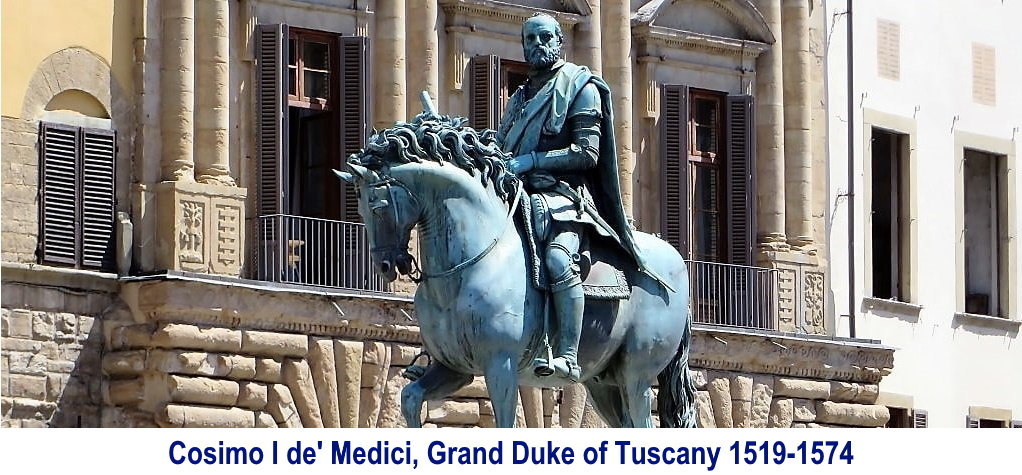Family office survival: nothing’s guaranteed
by charles | Comments are closed11/26/2022
If you’re a great entrepreneur, you’re likely a pretty bad investor
Family office survival is no sure bet, according to Josh Baron and Rob Lachenauer, co-founders of BanyanGlobal Advisors. In fact, family-owned companies have a better chance of managing succession than the family investment office. But wealth preservation has never been easy. For those founders facing the perils of passing on the legacy, Messrs. Baron and Lachenauer have a few suggestions that just might help.
Their September 2022 article in Harvard Business Review, Is Your Family Office Built for the Future, highlights internal office tensions, the lack of emotional connections among generations, and unintentional dependencies.
The authors argue that family office founders face five key decisions which determine success or failure. They are:
- Design: How will you own your assets together?
- Decide: How will you structure governance?
- Value: How will you define success for your family office?
- Inform: What will and what won’t you communicate with your family?
- Transfer: How will you handle the transition to the next generation?
Family office clout
It’s tough to get a handle on how many family offices there are in the US, the assets they control, or their objectives because most prefer to stay unnoticed. But no matter how you count them, they are a significant force for investment and philanthropy.
An oft-cited Campden Wealth study estimates roughly 3,100 large single-family offices in North America, 42 percent of the global 7,300.
Forbes reported in 2020 that the top fifty wealthiest US families alone were collectively worth about $1.2 trillion.
Casting a broader net, Credit Suisse counts about 140,000 ultra-high-net-worth individuals in the US with wealth over $50 million.
While endowments and foundations get most of the attention, the family office universe is larger, growing faster, and doing a great deal of good while doing well.
So, what’s on their minds?
Family dynamics, more than money
Read More »Family Office direct investing: the thrill is gone
by charles | Comments are closed11/07/2022
No matter who you are, most of the smartest people work for someone else. — Bill Joy
Large family offices over $5 billion AUM with five or more years of experience running in-house direct investing programs now have the data to assess their efforts. From what we hear, for many families, it’s just not worth the effort.
Attribution studies conducted recently by a number of family office investment staffs conclude that they would have been better off buying an index.
Our clients and contacts cite three reasons for their disappointment, public market performance, high costs, and competition.
A few caveats. We usually provide data to back up our thesis, but in this case, due to the sensitivity of our sources (i.e., the career limiting nature of any disclosures), our comments will have to be anecdotal.
Also, the SFOs we spoke with on background regarding direct investing made their money from tech, energy, and manufacturing, not finance.
It’s tough to beat public markets
US equities set a particularly high hurdle for performance this past decade and over longer periods remain a hard mark to beat.
Here’s a snapshot of the S&P over the last twelve years along with some international peers.
(S&P 500 12-yr performance 2022)
Lamentably the stock market took a nasty fall this year after capping an extraordinary run in 2021, but for long term investors it’s hard not to embrace public equities.
Since 1945 the S&P increased on average about 11% annually, posting an inflation-adjusted return of 7.14% per year. More than enough to provide comfortable payouts for generations of happy heirs.
High costs
Read More »
Masters of the Universe, Fortune Tellers, and Fate
by charles | Comments are closed09/11/2022
“We’ve long felt that the only value of stock forecasters is to make fortune tellers look good.” — Warren Buffett
Howard Marks sent out a memo last week – The Illusion of Knowledge – in which he ponders the value of economic forecasts. He concludes that they aren’t worth much to anyone but the forecasters.
As recruiters evaluating senior investment talent we wrestle with a comparable conundrum, how can we make informed judgements about candidates and their success in the future when our knowledge and intuition is based on the past?
Don’t get us wrong, we meet exceptional clients and candidates almost every day – smart successful families, board members, and professional investors at the top of their game.
But interviewing chief investment officers and up-and-comers is a bit like camping with Garrison Keillor at Lake Wobegon, “where all the women are strong, all the men are good-looking, and all the children are above average.” We have yet to meet a candidate who hasn’t produced top quartile results.
Almost everyone is convinced they can pick superior managers and investments while the other guy rolls snake eyes. Active management is for heroes, indexing for geezers.
In our interviews for institutional and family office clients we often hear the comment that public markets are nearly impossible to beat, yet in the next breath they tell us their endowment or foundation team has consistently beaten public market benchmarks using active managers.
While we are impressed by their conviction, we wonder about their claims.
We’re in good company. Mr. Marks has also questioned the track records of active managers, at least those who place bets on macro trends. So he sourced a few Hedge Fund Research (HFR) performance metrics for guidance. This is what he found.
And remember, these are arguably some of the smartest guys and dolls on the Street.
HFs vs. S&P 5-year annualized return*
12.80% – S&P 500 Index
5.20% – HFRI Hedge Fund Index*
5.00% – HFRI Macro (Total) Index
====================
HFs vs. S&P 10-year annualized return*
13.80% – S&P 500 Index
5.10% – HFRI Hedge Fund Index*
2.80% – HFRI Macro (Total) Index
*Performance through July 31, 2022. The broad hedge fund index shown is the Fund Weighted Composite Index.
You can’t beat Art History
The chart above focuses solely on hedge fund performance. Large endowments on the other hand, with AUM over one billion dollars, hold on average well over one hundred active managers across the investment spectrum, with some managing close to three-hundred funds (asset managers, commingled funds, and partnership interests, NACUBO Study 2019).
Read More »Family Office Chief Investment Officers: One in a Million
by charles | Comments are closed08/15/2022
I made my money the old-fashioned way. I was very nice to a wealthy relative right before he died
— Malcolm Forbes
Everyone is chasing family money these days. Andreesen Horowitz, west coast venture capital powerhouse, is the latest institutional investor to create a wealth management arm. Their hook of course is quite tempting, you let us manage your money and there just might be room for you in our next venture fund.
They recently hired Michel Del Buono, formerly of Jordon Park, Makena, and Scion Capital as the new chief investment officer. (Remember Scion Capital and its prescient founder Michael Burry, played by Christian Bale in The Big Short?). Clever devils.
For those family offices able to access the top VC firms, the returns can be impressive. Family portfolios produced an internal rate of return of 24 percent in 2021 according to a survey by Silicon Valley Bank.
Family wealth, that pot of gold
The asset management business is diverse, powerful, and exceptionally profitable. No wonder so many banks, brokers, OCIOs, and RIAs, are clamoring for a piece.
Boston Consulting Group’s Global Asset Management Report 2021 estimated $45 trillion in US institutional and retail assets under management at the end of 2020 with revenues as a share of average AUM at 23.7 bps. That’s well over one-hundred billion dollars.
Taken as a whole, S&P Global IQ calls financials the most profitable of eleven sectors they follow, with a 25.3 percent profit margin in 2021. Energy firms ranked near the bottom by the way at 8.3 percent, though you wouldn’t know it from the howls coming out of Washington.
Ultra-High-Net-Worth (UHNW) families are well aware of the fees and hidden costs attached to wealth management offerings which explains why so many family offices are adding internal investment capabilities.
That’s our job, recruiting chief investment officers for families and institutions.
Leave it to the kids
While family dynamics probably haven’t changed much since Count Leo Nikolaevich Tolstoy wrote his famous line about unhappy families, the modern family investment office has come a long way from 1878 when Anna Karenina was published, adding structure, discipline, and academic rigor to the management of UHNW wealth.
According to Capgemini’s latest wealth report, Top Trends 2022, millennials and gen-X are set to inherit somewhere between $10T to $30T over the next two decades via multigenerational transfers. (Estimates vary widely but they all tally in the trillions)
Some will choose wealth advisors but, in our experience, once a family accumulates over half a billion dollars in investable assets, they start thinking seriously about hiring an investment manager.
That’s when it gets interesting. Each first-gen founder and every multi-generational family has a distinct culture, temperament, and objective. The fit has to be just right between the family and their head of investments.
Hands on, hands off
Most founders and families are inclined to invest in one of two ways, institutionally or opportunistically.
In the most general sense, the institutional, or “endowment style” of investing – with investment policy statements (IPSs), diversification, and risk mitigation – appeals more to gen-two and beyond, while first-gen entrepreneurs, not surprisingly, prefer a hands-on, opportunistic approach, investing directly in any business, security, or private vehicle that catches their eye.
As one highly successful family office client wrote in our last newsletter, “We consider ourselves opportunists rather than allocators; we are not driven by an allocation-based investment policy statement (IPS). So we always want to have sufficient cash (or borrowing capacity) to meet opportunities as they arise.”
Diversification? How boring
Read More »The Family Office: where cash is king
by charles | Comments are closed07/18/2022
All I ask is the chance to prove that money can’t make me happy.
— Spike Milligan
Something caught our eye last week as we leafed through a recent Harvard Business School case study, “Modern Endowment Management: Paula Volent and the Bowdoin Endowment.”
The investment team has kept almost no cash or fixed income on hand for over fourteen years. Three-quarters of the portfolio runs on private equity and hedge fund moxie, the rest in stocks.
That’s not how most ultra-high-net-worth (UHNW) family offices do it. In our experience, these offices hold substantial amounts of cash and bonds, adding stocks and real estate for the long haul. Why such a divergence?
According to the HBS study, Bowdoin’s allocation to bonds and cash shrank from 18 percent in year 2000 to essentially zero by 2008 and apparently there hasn’t been a dime added to liquidity since.
Granted, it certainly hasn’t hurt Bowdoin’s performance. Ms. Volent and her team led our ten-year performance rankings in our last endowment report.
Furthermore, the school has sizable reserves. We looked up the College’s financial statements, which listed cash and equivalents of about $80 million against operating expenses of $176 million as of June 30, 2020. So the bursar made sure there was cash in the kitty. And, for the Ivys and elites, Bowdoin included, there are hefty credit lines and wealthy donors to lean on in a pinch.
Bowdoin is not alone, of course. Many large university chief investment officers have managed their endowments for years with a cash-is-trash attitude.
And, as most CIOs have learned the hard way, it’s a brave investment manager indeed who breaks from the herd.
Marks to make-believe
As we wrote last December, endowment returns for 2021 approached the realm of fantasy. Institutional investors delivered once-in-a-lifetime performance, from about 25 percent at the most tentative public pensions to 65 percent at Washington University, St Louis.
Bowdoin, for example, posted an astonishing 57.4 percent return.
We opted not to do our usual performance study last year because we felt the private market marks were too far off the mean – and reality – to fairly assess skill. Given this year’s collapsing valuations, we think we made the right call.
However impressive those investment returns eventually turn out to be once marks convert to hard cash, we can’t help but recall what my first-year finance professor (Robert S. Hamada) at The University of Chicago emphasized in class.
He said that exceptional money managers seem to have the touch. And we can theorize, not always correctly, about how they do it. But most of them have a run bracketed by a certain period or a set of conditions, and then they are gone.
Families think differently
Family offices have been around for centuries and weathered every conceivable storm. They prefer not to fly so close to the sun.
From the major-domos in ancient Rome to Rockefeller and Microsoft heirs, cash has always been king. Liquidity meant power and the means to act in good times and bad.
Maybe it’s also because family founders are usually operators who run businesses and in business, running out of cash is original sin.
The latest UBS Global Family Office Report 2022 breaks out UHNW family asset allocations and their preference for liquidity. The bank polled two-hundred-twenty-one single family offices with total wealth of almost half a trillion dollars and average assets under management of over two billion dollars.
UBS found that large family offices hold substantial cash and fixed income, about a quarter of their wealth all told. Families seldom bet the house.
There have been a few spectacular exceptions of course, Bill Hwang’s Archegos Capital Management for one; the Hunt brothers Herbert and Nelson’s run on the world’s silver supply for another. What were they thinking?
Fortunately the youngest of the three Hunt brothers, Lamar, kept his head and his money and, among other honors, became a Culver Academies Athletic Hall of Fame Inductee in 2006. Funny thing about high school, I couldn’t wait to graduate and yet, most of my closest friends come from our Culver days.
But I digress.
Read More »




